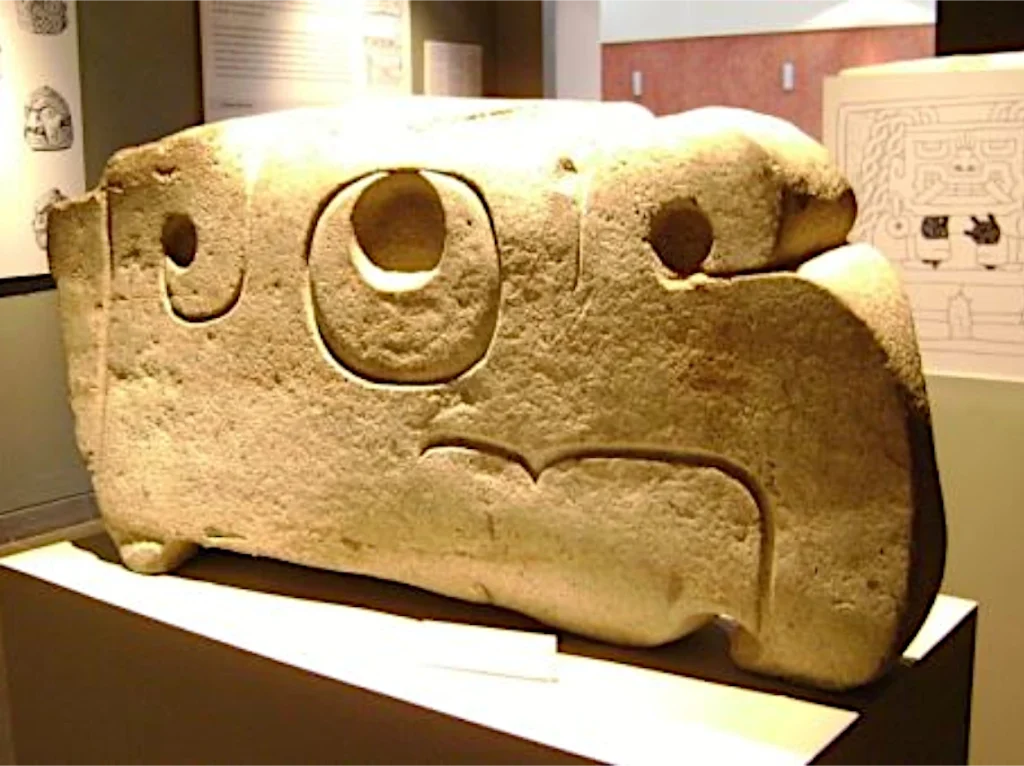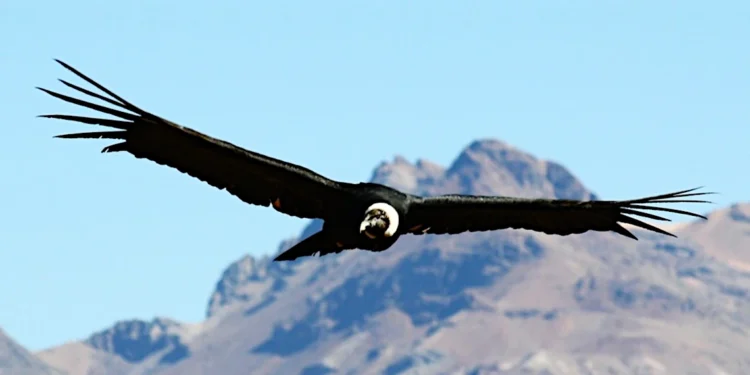This post is also available in:
Español
Nederlands
A Spirit That Soars the Skies
In the dizzying heights of the Peruvian Andes—where the sky embraces the land and the wind whispers in ancient tongues—dwells a creature as imposing as it is enigmatic. With wings stretching nearly three meters wide and a gaze that seems to pierce through time, the Andean condor is not merely a bird: it is a symbol, a guardian, a sacred spirit.
For the Andean cultures, the condor is more than wildlife; it is a divine presence, a messenger between the earthly world and the gods. Today, its majestic silhouette continues to inspire awe, respect, and an urgent call for preservation.
In this article, we’ll explore the history, mythology, biology, and symbolism of the Andean condor—a deep dive into the heart of one of Peru’s most emblematic creatures, crafted especially for readers in Europe and the Netherlands who are curious about Peruvian culture.
The Condor in Andean Worldview: Bird, Spirit, and Eternal Symbol
For the ancient peoples of the Tahuantinsuyo (the Inca Empire), the condor was part of a sacred trilogy alongside the puma and the serpent. Each animal represented a different realm:
- Cóndor – Hanan Pacha: the upper world, the celestial and divine
- Puma – Kay Pacha: the earthly world
- Serpiente – Ukhu Pacha: the underworld, the spiritual realm

The condor was believed to carry souls to the afterlife. Its silent, high flight symbolized freedom, transcendence, and cosmic connection.
“The condor doesn’t just fly: it meditates, observes, and travels between worlds forgotten by humankind.”
— Traditional Andean saying
A Giant of the Air: Physical Characteristics of the Andean Condor
Scientifically known as Vultur gryphus, the Andean condor is one of the largest flying birds in the world.
Key features:
- Wingspan: up to 3.3 meters (10.8 feet)
- Weight: 11–15 kg (24–33 lbs)
- Color: black body with white feathers around the neck and on the wings
- Lifespan: up to 70 years in captivity
Despite its massive size, the condor rarely flaps its wings. It glides effortlessly on the thermal updrafts of the Andes, covering great distances with minimal effort.
Its Habitat in Peru: Where the Wind Reigns
The Andean condor inhabits mountainous areas and deep canyons with limited human presence. One of the most iconic places to spot it is the Colca Canyon in Arequipa, one of the deepest canyons on Earth.
Other condor-watching sites in Peru include:
- Huascarán National Park (Ancash)
- Salinas and Aguada Blanca National Reserve (Arequipa)
- Cotahuasi Canyon
- High Andean areas of Cusco and Puno
Today, seeing a condor in the wild is rare—each sighting feels almost spiritual.
Biology and Behavior: Masters of Life in the Heights
Though often mistaken for a predator, the Andean condor is actually a scavenger. It feeds on carrion, playing a vital role in the ecosystem by keeping it clean and balanced.
Fascinating facts:
- Monogamous: They form lifelong pairs
- Slow breeding: Only one egg every 2–3 years
- Flight-dependence: Difficult to take off from flat surfaces—needs wind or cliffs
These traits, combined with habitat destruction, have made the condor vulnerable to extinction.

The Condor in Contemporary Peruvian Culture and Art
The condor hasn’t remained locked in ancient myths. It still inspires music, literature, dance, urban art, and even tattoos in modern Peru.
Songs like “El Cóndor Pasa” have traveled the world, presenting the condor as a symbol of freedom, nostalgia, and Andean pride.
“When the condor passes, it carries our memories, hopes, and prayers with it.”
— Adapted from a traditional Andean huayno
Modern Threats and Conservation Efforts
Today, the Andean condor silently struggles to survive. Its main threats include:
- Accidental poisoning from toxic bait
- Habitat loss due to agriculture and urban expansion
- Illegal hunting and superstitions
But there is hope. Organizations in Peru, like SERNANP and local NGOs, work on awareness and conservation programs. In the Netherlands and Europe, collaborative initiatives are emerging to protect iconic species of Latin America.
What the Condor Can Teach Us
In a world that moves too fast, the condor reminds us of the importance of gaining perspective, living in balance with nature, and reconnecting with the spiritual realm.
For many cultures, the condor represents resilience, ancestral wisdom, and the invisible forces that guide us.
Would You Like to See a Condor in the Wild?
Visiting Peru to witness the Andean condor in flight is a transformative experience. From the viewpoints of Colca Canyon to the highlands of central Peru, its presence evokes awe and a deep connection to something greater.
Interested in sustainable travel in Peru? Or want to explore how Andean communities have lived in harmony with nature for centuries?
Connect with Peru
Subscribe to our newsletter to receive articles, interviews, and guides about Peruvian culture, wildlife, and authentic experiences in the Andes.
And if you or someone you know has encountered a condor in the wild, we’d love to hear your story








